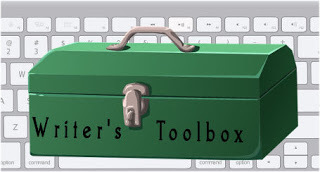Setting The Pace
 Hello everyone, Winnie Griggs here. Today I'd like to discuss story pacing.
Hello everyone, Winnie Griggs here. Today I'd like to discuss story pacing.Before we start, let’s set a baseline by talking about just what we mean by Pacing. Pacing is the rhythm and momentum of your story as choreographed by the action and beats of your chapters, scenes, paragraphs, sentences and even word choices. It directs the ebb and flow of your story, the speed with which your reader moves through the story as well as the speed at which the timeline of your story events unfold.
Effective pacing employs all the available tools at a writer’s disposal to keep your reader intrigued, emotionally engaged, and, most importantly, turning the pages. In fact, pacing is not measured in actions or events, but in the emotional investment your reader has in the unfolding of your story.
Think about pacing in terms of dancing, more specifically square dancing. Square dancing normally brings to mind structure, energy, teamwork and following directions.
Traditional square dancing is made up of about 30 standardized movements referred to as ‘calls’. The caller has the freedom to sequence these calls in a variety of ways and it’s his goal to sequence them in such a way as to create a dance set that both challenges and entertains the participants. If he’s done his job well, the dance will have a pleasing flow for each couple and for the overall group. He does this by giving thought to which calls he will include, what sequence he will arrange them in, and what tempo he will set for each.
In literature, of course, the author plays the role of caller and one of the critical tools she uses to orchestrate the movements of the story is pacing. It’s all about piquing and holding your reader’s interest, about making it a keen ‘page turning’ experience for her. Well-orchestrated pacing strikes a balance between heart-pounding action scenes and the more thoughtful, cerebral scenes and everything in between.
As the author, it’s your job to manipulate time in order to keep the reader engaged. You do this by giving story weight to the moments that deserve them. You compress long periods of time where nothing significant happens into short transitional passages, and taking those moments that are minimal time-wise but are significant in story-weight and really focus in and drill down to wring every ounce of emotion and story progression from them.

As for the mechanics of how to do this, it’s not as mysterious and difficult a task as some think. Sentences that are longer and more complex than normal read much slower than those that are shorter and more clipped. In square dance terms this would be like following an advanced move like a Dixie Grand with the slower and more stately Promenade.
You can also control the pace through the inclusion or exclusion of detail. Passages that are lush with imagery and description slow the reader down as they take time for a reader to visualize and appreciate the picture you are painting. Whereas, in a high octane action scene, your detail is stark and delivered in staccato bursts.
A third method is through the use of dialog and the way in which that dialog is delivered. The energy and emotion of the conversation will seep into the reader, subconsciously adding to the tension or calmness of the pace.
And then, of course, there is the manipulation of story time. As I mentioned earlier, to move the story along, compress all those days and weeks when nothing of significance happens into a short transition. Conversely, take your big payoff scenes and really focus in on them. I’ll talk more about that a little later.
In real life we all enjoy indulging in an occasional change of pace, some excitement injected into our day-to-day routine to jar us out of our boring normalcy, or something soothing to help us relax after a frantically paced day. So it is with our readers.
Most of us have heard that the faster the pace the better, that today’s reader, for the most part has a shorter attention span, a TV-and-internet-induced thirst for rapid fire bursts of information and entertainment.

And yes, fast paced is good, but even an action adventure story needs some breathers sprinkled in, some time for the characters - and the reader - to reflect, however briefly, on what is happening around them and to them. These are your reaction scenes, the moments where your character thinks, perhaps licks his wounds, then plots and plans before moving into the next action scene.
Stories have a rhythm that is unique to the genre and to the particular tale you want to tell. If that underlying music is based on one note, no matter how rapid you play it, it becomes monotonous and quickly bores the reader. Varying the notes and the tempo, however, stirs the listeners’ interest, perhaps makes the toes tap and the shoulders and hips move, in effect tugging the listener into the music itself, making them an active participant. In similar fashion, effective pacing draws the reader in, engages them in what is happening on the page and propels them forward through the story. It both builds the tension and allows for moments of slower movement to emphasize important moments, build on emotions and enhance the richness of the overall experience.
There are also certain scenes, even in the fastest paced stories, that have a huge emotional payout for your reader - these are the scenes you most certainly DON’T want to race through, that you want to dig into in order to provide depth and texture and sensory richness.
In a romance novel these scenes would include, among others:· The First meeting/inciting incident· The First Kiss· The first love scene if your book includes one· The realization of being in love (for each the hero and the heroine)· The revelation of the major backstory/motivating event/’big’ secret· The black moment· The happily ever after resolution
These scenes are the heart and soul of your book, the emotional lynchpins that, when structured well, can land a book on many a reader’s keeper shelf. This means that you should take the pains to immerse the reader in whatever emotions are applicable - hope, joy, anguish, poignancy, rage, passion, or a deep and abiding commitment.

Because these are the scenes your reader eagerly anticipates, she will really appreciate you slowing the pace at these pivotal moments. In fact, make certain you don’t rush through them, or worse yet, transition over them entirely. Take the time to truly focus on the emotions your characters are feeling, as well as those you want your reader to feel (not always the same). To do this you will need to draw on every tool at your disposal, including craft, instinct, finesse, and your writer’s “inner ear”
Again, the key is to get the balance right. If your story is composed of only long thoughtful passages, no matter how evocative or lyrical, your reader will find it much too easy to lose interest and close the book. On the other hand, if it’s all frantic, high-action scenes, then your reader may find it unsettling and confusing and perhaps unbelievable. Non-stop action, in fact, can have a numbing effect, and your scenes will lose much of their impact if there is no change in the pace.
It is the peaks and valleys, the pulse pounding moments at the crests punctuated by emotional breathers on the plains that provide the variety necessary to keep readers from getting bored or complacent. What makes this seem such a maddening task is that striking the right balance between that ebb and flow of your story is different for each and every story we write. The mix of action vs. reaction, the amount of description and detailed world building, the introduction and placement of sub-plots, turning points and major reveals will all vary greatly from story to story. As writers we should seek to direct our words to provide the pacing that is just right for the scene we’re writing, the pacing that will deliver the emotional punch you want the reader to feel.
It’s up to you as the author to figure out what that mix is for the specific story you want to tell. How you do that is based partly on what you’ve learned about the craft of writing and partly on instinct, or, to carry out our dancing metaphor, your own natural rhythm.

Do you have any additional insights or tips when it comes to story pacing? Did any of these points resonate with you? Join in the conversation to be entered in a drawing for reader's choice of any book from my backlist.
Published on June 18, 2020 21:22
No comments have been added yet.



